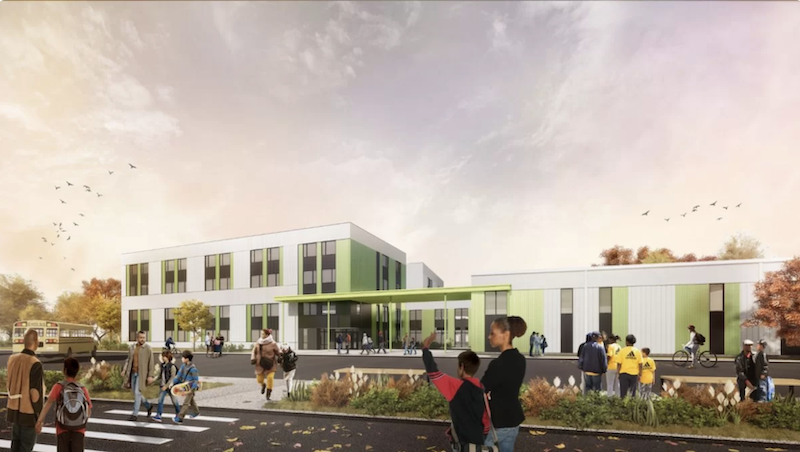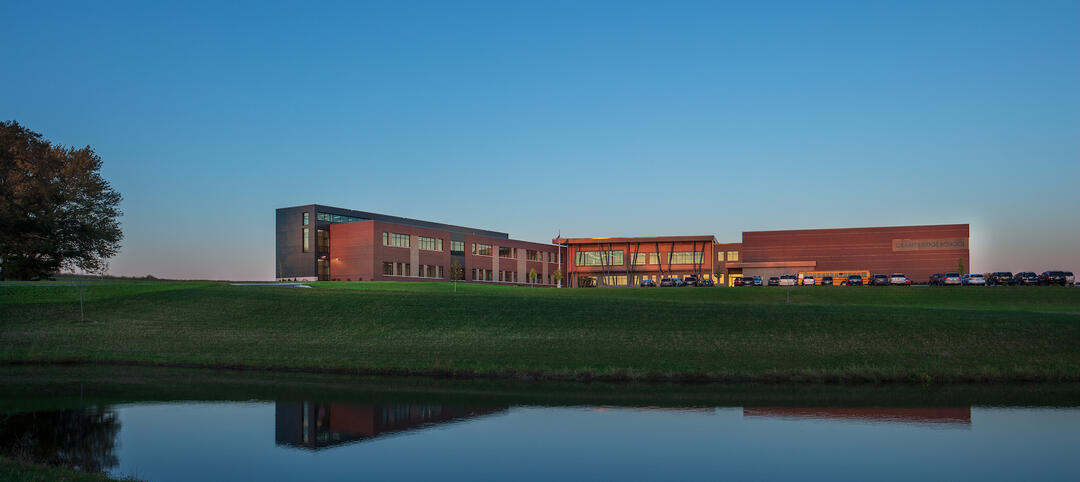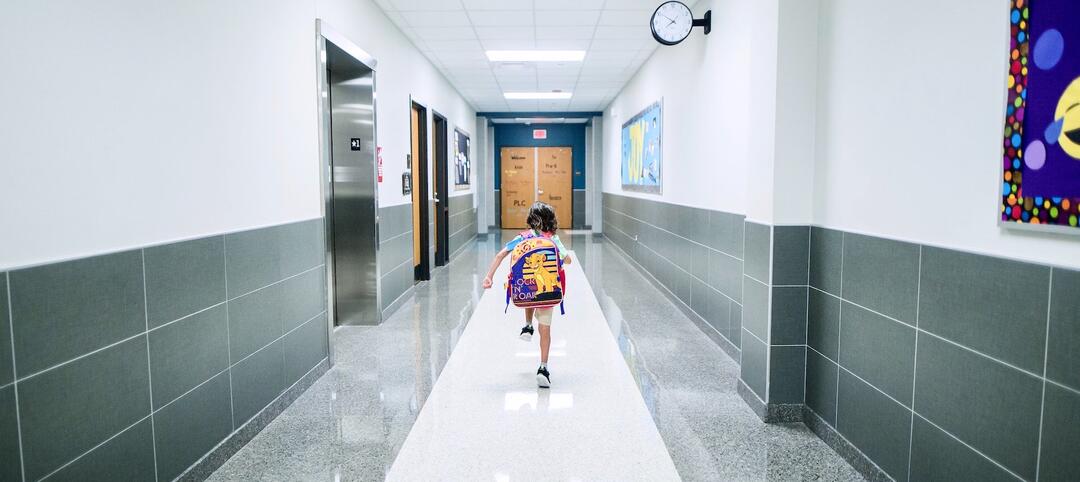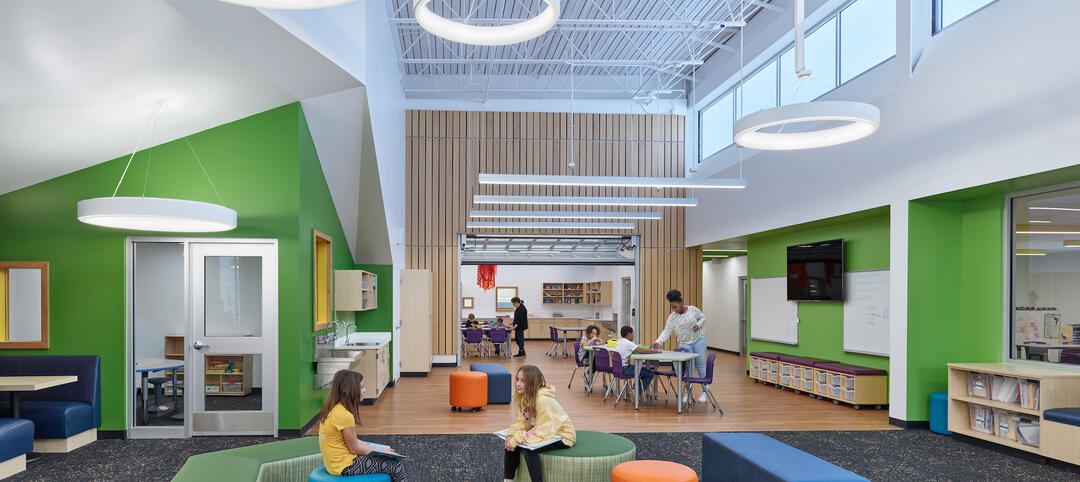Last December, Prince George’s County in Maryland became the first K-12 school district in the nation to partner with the private sector to bundle and finance a six-school delivery program. The public-private consortium included Fengate Capital Management, Gilbane’s development and building companies, designer and architect Stantec, and maintenance services provider Honeywell. JLL was Prince George’s Public School’s financial advisor.
The new schools will be ready for the 2023-24 school year, and add 8,000 new seats across five middle schools and one K-8 school. The school district is expected to save $174 million in deferred maintenance and construction costs.
Financing the construction and renovation of public schools continues to be a major challenge that, in many states, hinges on voters approving bond issues or taxes. For most of America’s 13,000-plus school districts, the private sector is an untapped source for funding.
“At the moment, there is no common definition of a P3 in the U.S., there is no centralized governing body overseeing P3s, and there is an extremely limited breadth of experience in [the] K-12 sector,” states Braisford & Dunlavey, an education planning, development, and management consultant based in Washington, D.C., which has released a free, 40-page guide to K-12 public-private partnerships (P3s).
The guide notes that the National Council of Public-Private Partnerships identifies 18 different legal and financial P3 structures, and each agreement is sui generis to the partnership, or deal. “In K-12, we expect the range of employed structures to be much smaller. Still, each partnership will be unique.”
SEVERAL MOTIVATIONS CITED
The guide cautions that P3s are complex deal structures, and there is no simple pro/con checklist for school districts considering entering into them.
Possible motivations might include accelerating the schedule for delivery of one or more school projects. (That was the primarily factor driving Prince George’s County’s P3.) Reallocating risk and lowering construction costs are two other reasons why P3s might make sense. But school districts must also realize there’s a cost to shifting risk to the private sector in terms of capital lending, legal and development fees, and other compensation.
“P3s aren’t employed for fun,” cautions the guide. “They’re neither simple nor free, and can face a resistant community. If they’re employed, it means there’s a problem that needs solving and it’s best solved with a P3.”
And because K-12 districts typically lack revenue-generating components, the full range of P3s isn’t available to them. “We expect most large-scale projects in K-12 will resemble availability payment agreements/concessionaire agreements, in which the development team designs, builds, finances, operates, and maintains a building that it ‘makes available’ to the district in exchange for availability payments (paid annually, throughout the life of the agreement),” the guide states.
For a P3 to be a viable funding solution, enabling legislation must be in place, the guide states. And for large-scale projects to “pencil out,” the guide recommends that operations and maintenance be key components to most deals.
IS YOUR DISTRICT A GOOD P3 CANDIDATE?
Braisford & Dunlavey states that certain districts fit the profile for considering P3s:
•A large school district facing financially crippling deferred maintenance. “Good news for these projects: Bigger districts tend to have bigger budgets. That can attract developers and other private partners for a large-scale P3. While a smaller project isn’t doomed, it’s less likely.”
•A large school district facing growing enrollment.
•A school district (small or large) with land it can give up, and whose needs it cannot meet on its own. The guide suggests that this type of revenue model is an “easier” P3, but the district still needs to convince the public that this is the best use of the land.
•A school district with a visionary leader who steps up and says, “Enough is enough.” The guide says that projects need champions to navigate approvals, manage stakeholder engagement, and think strategically.
The attributes of any good engagement, according to Braisford & Dunlavey, start with a clear definition of expected outcomes. These pacts also require sufficient time to hash out the deal’s structure and legal details. Stakeholders need to be “true partners” invested in each other’s success, and always honest.
The school district should define the quality of the project’s design and construction, but also be flexible enough to allow its private-sector partners to achieve those parameters.
Related Stories
K-12 Schools | Nov 1, 2022
Safety is the abiding design priority for K-12 schools
With some exceptions, architecture, engineering, and construction firms say renovations and adaptive reuse make up the bulk of their work in the K-12 schools sector.
BAS and Security | Oct 19, 2022
The biggest cybersecurity threats in commercial real estate, and how to mitigate them
Coleman Wolf, Senior Security Systems Consultant with global engineering firm ESD, outlines the top-three cybersecurity threats to commercial and institutional building owners and property managers, and offers advice on how to deter and defend against hackers.
Education Facilities | Oct 13, 2022
A 44-acre campus serves as a professional retreat for public-school educators in Texas
A first-of-its-kind facility for public schools in Texas, the Holdsworth Center serves as a retreat for public educators, supporting reflection and dialogue.
K-12 Schools | Sep 21, 2022
Architecture that invites everyone to dance
If “diversity” is being invited to the party in education facilities, “inclusivity” is being asked to dance, writes Emily Pierson-Brown, People Culture Manager with Perkins Eastman.
| Sep 7, 2022
K-8 school will help students learn by conducting expeditions in their own communities
In August, SHP, an architecture, design, and engineering firm, broke ground on the new Peck Expeditionary Learning School in Greensboro, N.C. Guilford County Schools, one of the country’s 50 largest school districts, tapped SHP based on its track record of educational design.
Giants 400 | Sep 1, 2022
Top 100 K-12 School Contractors and CM Firms for 2022
Gilbane, Core Construction, Skanska, and Balfour Beatty head the ranking of the nation's largest K-12 school sector contractors and construction management (CM) firms for 2022, as reported in Building Design+Construction's 2022 Giants 400 Report.
Giants 400 | Sep 1, 2022
Top 70 K-12 School Engineering + EA Firms for 2022
AECOM, Jacobs, WSP, and CMTA top the ranking of the nation's largest K-12 school sector engineering and engineering/architecture (EA) firms for 2022, as reported in Building Design+Construction's 2022 Giants 400 Report.
Giants 400 | Sep 1, 2022
Top 160 K-12 School Architecture + AE Firms for 2022
PBK, DLR Group, Huckabee, and Stantec head the ranking of the nation's largest K-12 school sector architecture and architecture/engineering (AE) firms for 2022, as reported in Building Design+Construction's 2022 Giants 400 Report.
| Aug 24, 2022
California’s investment in ‘community schools’ could transform K-12 education
California has allocated $4.1-billion to develop ‘community schools’ that have the potential to transform K-12 education.
Giants 400 | Aug 22, 2022
Top 90 Construction Management Firms for 2022
CBRE, Alfa Tech, Jacobs, and Hill International head the rankings of the nation's largest construction management (as agent) and program/project management firms for nonresidential and multifamily buildings work, as reported in Building Design+Construction's 2022 Giants 400 Report.

















